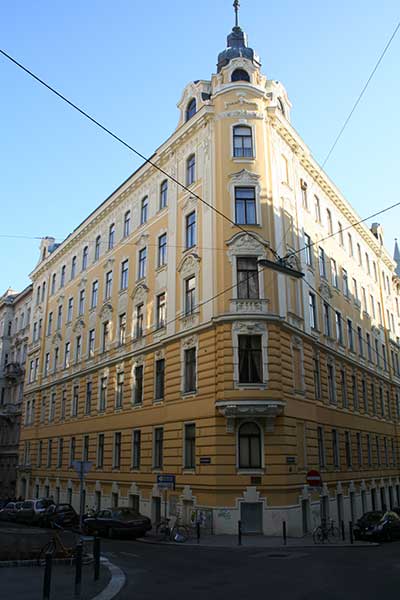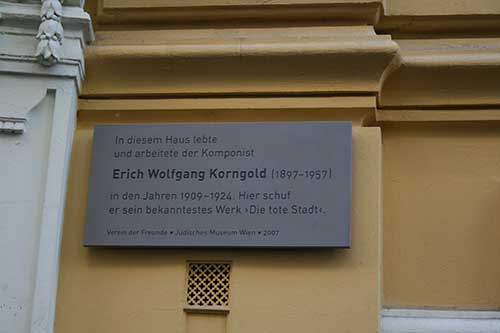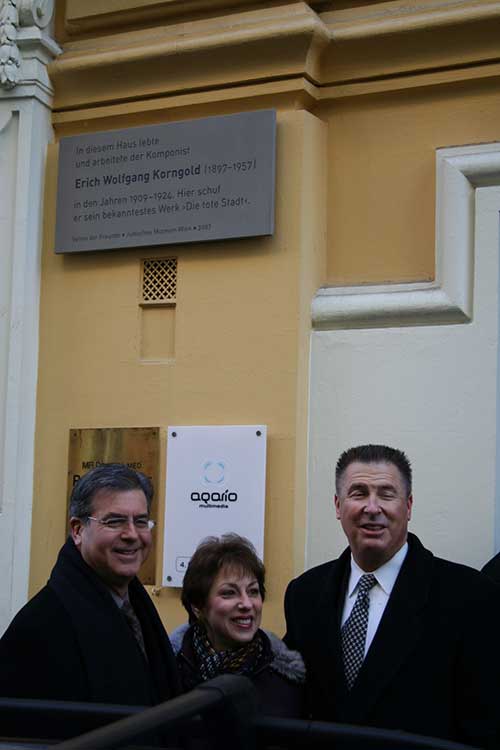Thursday, 29 November 2007 – Vienna, Theobaldgasse 7.
It’s a quite cold morning as an intimate group of dignitaries, guests, and a few reporters and photographers gather at a seemingly inauspicious address a few blocks outside of Vienna’s famous Ring Strasse. But the yellow apartment building where we are meeting is special to the small group assembled today: this was the building where Erich Wolfgang Korngold lived for a number of years, and where Bruno Walter famously reported being “forced to listen” to the young Wunderkind as he played the piano just a couple flats away.
Today, the Austrian Cultural Ministry is unveiling a commemorative plaque that has been affixed to the building near its main entrance. In attendance, Korngold’s grandchildren Kathrin Korngold Hubbard, Gary and Leslie, their spouses, and several of Korngold’s great-grandchildren. Also present this morning are Korngold biographer Brendan G. Carroll, members of the Jewish Museum in Vienna, and representatives of the City of Vienna itself. Three different news agencies appear represented, and a few guests are also here, as well as the people who currently live in Bruno Walter’s former flat.
Shortly after 11:00, a brief speech ensues memorializing the moment, the place, and the composer, followed by the official unveiling of the plaque. A seemingly un-momentous moment for the world as a whole, yet a deeply significant gesture for Vienna in recognizing one of its former sons.




